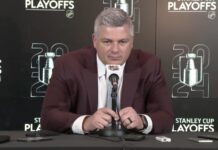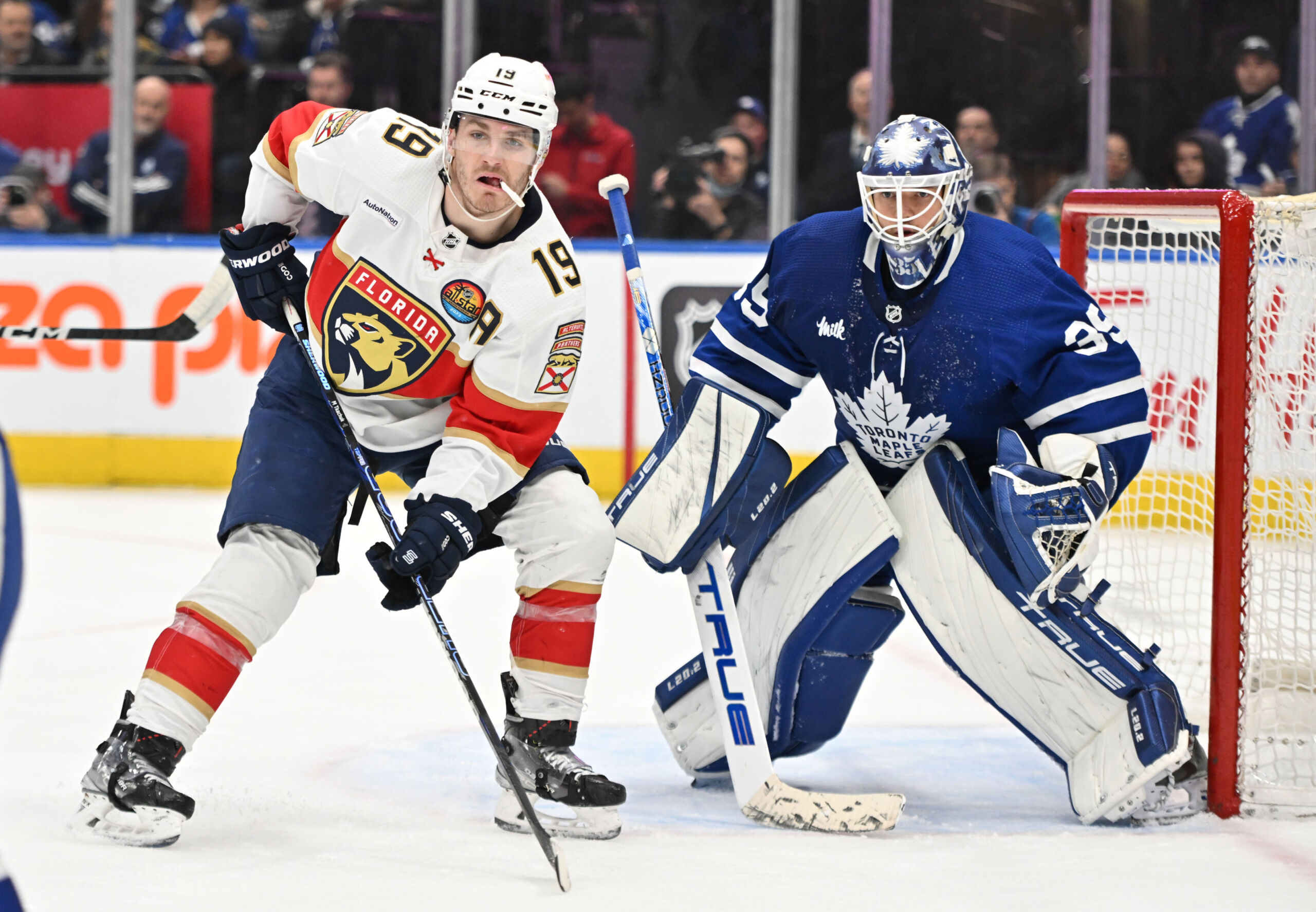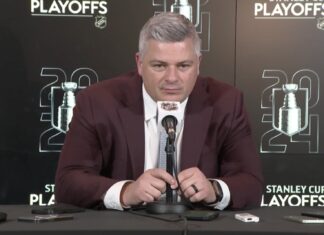A new NHL season is upon us, and the Maple Leafs enter the campaign facing high expectations yet again for the 2023-24 regular season.
Most of those expectations concern their performance in April and beyond, but it’s noteworthy that despite owning the third-best points percentage in the NHL since 2016-17 (.638), the Maple Leafs have yet to capture an Atlantic Division division regular-season title in the Auston Matthews era.
Is 2023-24 finally the season they check that box? Let’s dive into the key storylines throughout a competitive Atlantic Division.
Has Pierre Dorion assembled a playoff-worthy squad in Ottawa to save his job?
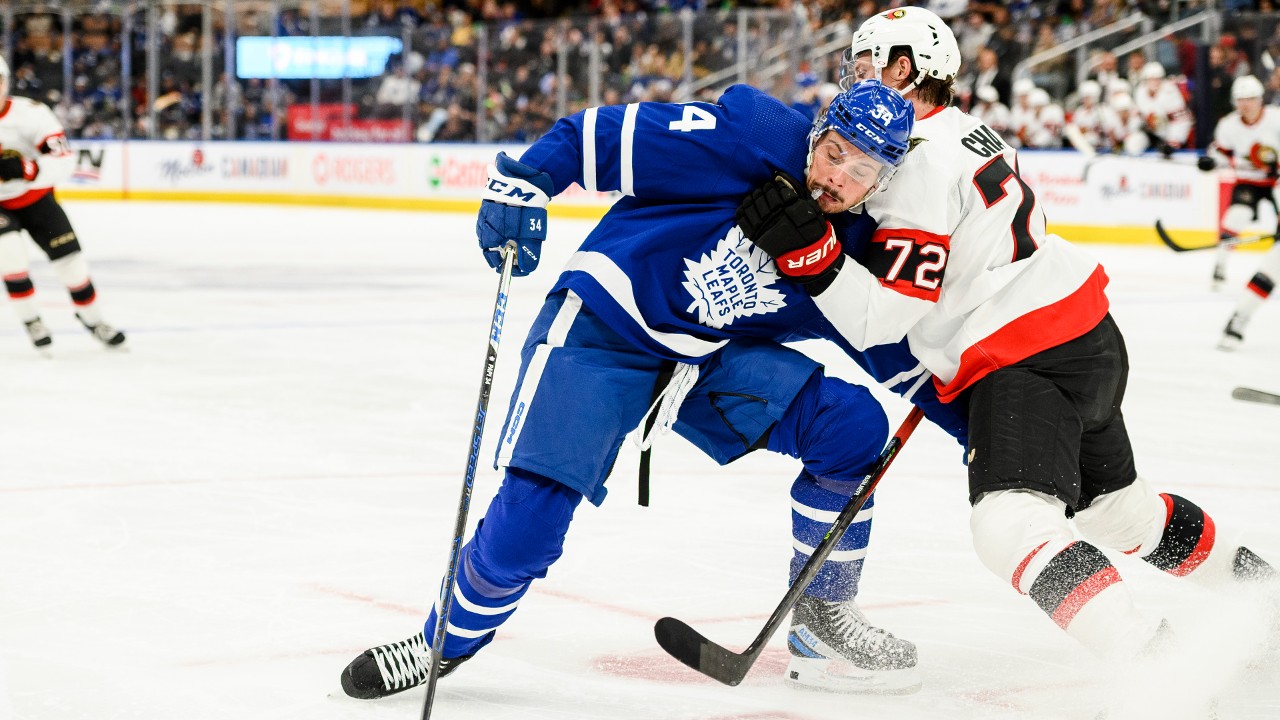
The Ottawa Senators have new ownership in Michael Andlauer, freeing the fanbase of Eugene Melnyk’s reign of terror. Hope is abound in Ottawa, but for GM Pierre Dorion, a new boss means an uncertain future. To secure an extension, Dorion’s Senators likely need to make the postseason. He has been aggressive in speeding up his rebuild, spending lavishly and mortgaging the future on a core that has not made the playoffs once. He believes in this group and has put his job on the line. Now it’s time for the players to reward his faith.
There is a lot going for these Ottawa Senators. Tim Stützle made a considerable leap towards stardom last year, eclipsing 90 points at just age 21. Brady Tkachuk is an excellent young winger, while Claude Giroux and Vlad Tarasenko add veteran firepower. If Josh Norris is healthy (more on that in a second), he is a respectable second-line center. The defensive top four assembled ain’t too shabby, either: Jake Sanderson, Thomas Chabot, Artem Zub, and Chychrun all appear to be solid (or better) top-four NHL defensemen. The Sens were above water in expected goals at 5v5 and in all situations last season, something neither of the other upstarts in this division (Detroit/Buffalo) could say. There are plenty of reasons for Dorion to believe in the group he’s assembled if their shooting percentage can tick up toward expectations.
There are also causes for concern, too. Norris is recovering from a lingering shoulder injury and recently suffered a “setback.“ He’s a strong player when healthy, but he has not been healthy very often, playing just 74 of the past 164 regular season games. The same could be said of Chychrun, who can be a top-pair defender when healthy but has regularly missed 20-30 games per season over his NHL career.
Cap troubles are also clouding the picture as the Senators still have not signed Shane Pinto, who would normally be their third-line center. To wrap it all up, goaltending appears to be a major question mark as it was last year. The team moved on from Cam Talbot but handed out a fat contract to Joonas Korpisalo, who boasts a career .904 SV% and has dealt with hip issues in his past.
I never like speaking in absolutes, but Ottawa has to make the playoffs this year for Dorion to save face. He pulled this team out of a rebuild and began burning assets that have left the franchise in a precarious position. They have not taken a first-round pick in either of the past two drafts — surrendering lottery picks in exchange for Alex DeBrincat (he recouped a first, but it will likely be significantly lower and two drafts later) and Jakob Chychrun — and his 2021 first-rounder Tyler Boucher does not appear on pace to be an impact piece. The farm system, once among the best in the NHL, has graduated its top talent and is now mostly depleted. Dorion’s decision to continue signing pricey free agents is why they are currently unable to sign Shane Pinto.
In other words, Dorion has been managing the Senators as if they are already a Cup contender akin to Toronto or Boston despite having never made the playoffs during the life of this core. If the Senators can’t make it this season, given all the win-now moves Dorion has made, what argument will he have to justify an extension to new ownership?
Does Juraj Slafkovsky show signs of becoming a franchise forward?

Let’s be real here. Montreal is not going to be a good team this season. They are the only team in the Atlantic Division that is currently in the tanking phase of the rebuild and rightfully so. While they have an interesting collection of young players, they are still not close to where they need to be to begin pushing for the postseason in terms of pieces on the roster as well as the farm system. Another NHL draft pick or two is necessary to support this foundation. What would also support the foundation is if 2022 first-overall pick Juraj Slafkovsky takes a major step forward.
The decision to draft Slafkovsky with the top pick in last year’s draft was a surprising one, passing up not just Shane Wright, the long-presumed first-overall selection, but also several other top prospects. With Logan Cooley, one of those prospects they passed up, joining the NHL this season and displaying his potential as a creative first-line center, the pressure is on Slafkovsky to reach his potential and justify his draft slot. Of course, Slafkovsky doesn’t just need to develop into a star forward to justify the draft slot; he needs to hit his potential for this rebuild to end in a Cup contender wearing the bleu, blanc et rouge.
Slafkovsky’s rookie year was unremarkable, playing 39 games for the Canadiens scoring four goals and 10 points. He was not terribly effective or notable in any particular way, but he also played most of the season at age 18. That’s increasingly difficult to do in the modern NHL, and no one else in his draft class did it (including Cooley). Jack Hughes, now a bona fide NHL star, struggled mightily in the league at that age. As a sophomore, Hughes took a step forward in his growth and development.
That’s what Montreal needs to see from Slafkovsky this season — not a dramatic explosion necessarily, especially since big forwards seem to take longer to develop (Tage Thompson is the greatest example), but Slafkovsky needs to show flashes or else it’s probably time to start worrying a little bit. He needs to be more noticeable on a nightly basis, showing a bit of an offensive touch and making an impact across the ice over his shifts.
The Habs have intriguing young centers in Kirby Dach, Nick Suzuki, and now Alex Newhook, as well as an already prolific goalscorer in Cole Caufield, but Slafkovsky’s potential as a big and skilled winger who can play like a power forward is rare. Slafkovsky needs to start playing like a young piece who can grow into that kind of player, and it’s the main storyline to watch with Montreal’s season that will (likely) contain a lot of losing.
Does Detroit have the (5v5) offensive firepower to make a jump into the playoffs?
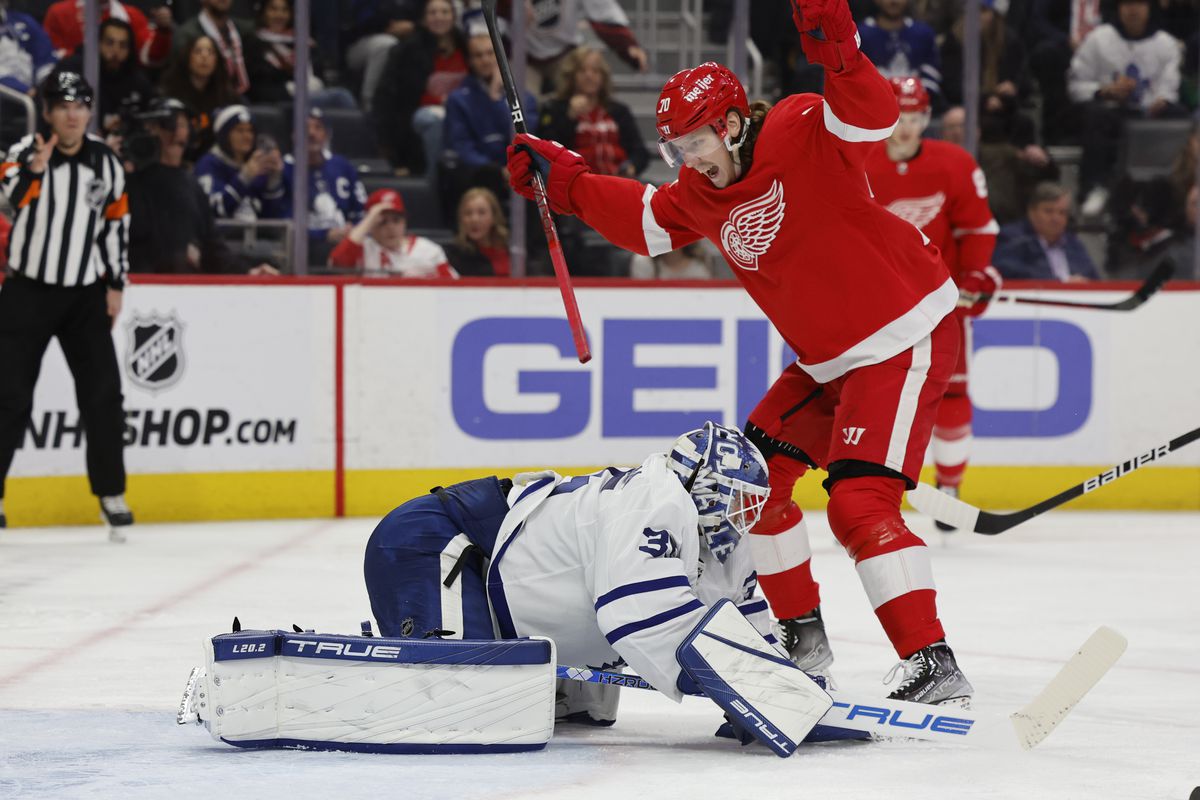
The Red Wings have steadily improved over each of the last three seasons, but they still ended last season a ways away from the postseason. GM Steve Yzerman knew this and identified the area for improvement: The Red Wings finished 30th out of 32 teams in 5v5 expected goals for per 60 minutes last season, per Evolving Hockey. They had a prolific power play driven by wily veteran David Perron, but despite the team’s defensive improvement under new coach Derek Lalonde, the Red Wings were still completely impotent at 5v5. Since most of the game is played at 5v5, the team finished 24th in goals per game. That will have to improve significantly for Detroit to make the leap needed into the postseason.
The big crown jewel acquisition was Alex DeBrincat, whom Yzerman acquired at a very reasonable price and extended long-term in a trade from Ottawa. DeBrincat struggled with the Senators, but his 27 goals still would’ve been second on Detroit last season. In the four seasons prior to last, DeBrincat averaged 37 goals per 82. There are questions about whether he can replicate that away from the dynamic playmaking of Patrick Kane, who he played with in Chicago, but even the reduced DeBrincat will be a massive boost to the Detroit offense.
Beyond DeBrincat, the team added Daniel Sprong to improve the middle-six scoring. Sprong has been a bit of a journeyman in his NHL career, but he’s among the league’s elite in scoring goals despite negligible ice time. Last season in Seattle, Sprong notched 21 goals despite playing merely 11:25 per game. JT Compher, signed to shore up their center position, is not a great offensive force, but he is likely an upgrade over Pius Suter in that area of the game. Lucas Raymond, the talented young winger, is a source of optimism on the offense front after bulking up in the offseason. On defense, the signing of Shayne Gostisbehere looks to give them some more oomph from the back end while further strengthening the Detroit PP units.
Offense isn’t the only area that the Red Wings need to improve. They need better goaltending — the backup spot was a major weakness last season (James Reimer and Alex Lyon were signed in the offseason) — and the defense will need to be better, too. Moritz Seider needs to take the next step, while players like Ben Chiarot and Justin Holl have to carry their weight. There are a lot of things that need to go right for the Red Wings to end up in the playoffs, but offensive improvement is the primary storyline to watch in Hockeytown.
Can Devon Levi and the Buffalo defense prevent goals well enough to make the playoffs?
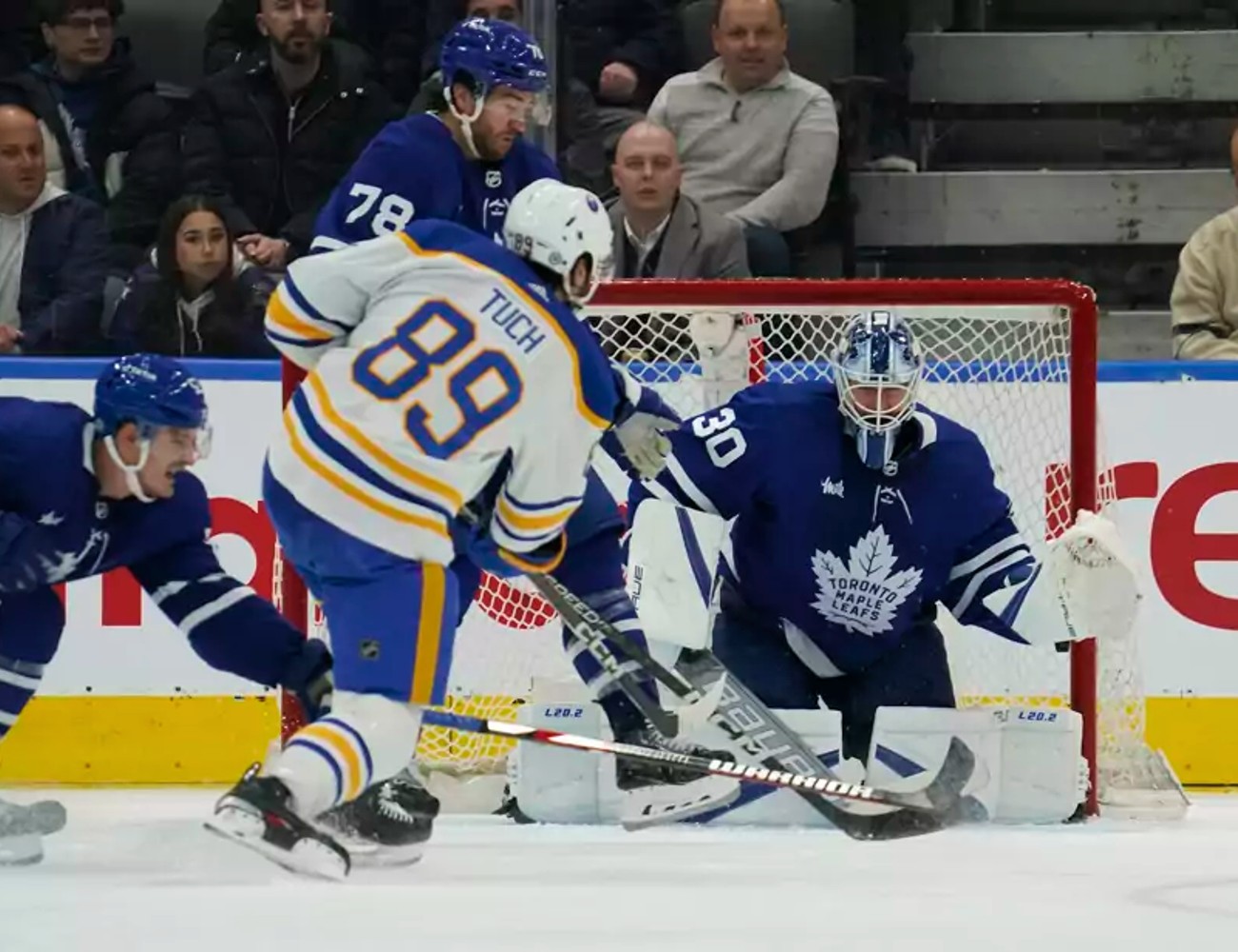
While the Red Wings need to see their offense improve dramatically to take the next step, for the Sabres, it’s their defense and goaltending. Last season was Buffalo’s best since the beginning of their eternal rebuild, but the team still missed the playoffs. It’s now been a dozen years since playoff hockey came to western New York, and if it’s to return in the spring of 2024, the Sabres will need to balance their firecracker offense with far better goal prevention.
The story starts in net, where heralded top prospect Devon Levi takes over the crease from Craig Anderson. Levi was a star in the NCAA at Northeastern — a two-time winner of the Mike Richter Award for the best D1 goaltender in college hockey — but it goes without saying that the NHL is a vastly different beast. Levi is also just 21 years old, which is remarkably young for a goaltender to be debuting in the NHL. Whether Levi will acquit himself and perform up to his talent level as a rookie is anyone’s guess, but it’s a huge one for Buffalo as the backup netminders, Eric Comrie and Ukko-Pekka Luukkonen, both struggled mightily last season.
The team in front of Levi needs to make the job easier for him, something they did not do at all for their goalies a year ago. The Sabres were sixth worst in allowing expected goals against per 60 at 5v5 last season and their penalty kill as a unit was under 75% (28th in the league). Part of the blame lies with the defense, but part of it is also on the forward group. Starting with the former, Rasmus Dahlin has proved that he is a high-level NHLer, but no one else has yet. Owen Power was promising as a rookie but has considerable work to do on the defensive end of the ice.
Youngster Mattias Samuelsson is a player the Sabres believe in, but he has not asserted himself as a legitimate top-four NHL defenseman yet and the same could be said for Henri Jokiharju. The right side of the defense is even shakier as Connor Clifton (signed from Boston) will be asked to play top-four minutes for the first time, while Erik Johnson was signed from Colorado to be a veteran presence, but the 35-year-old may only have so much left in the tank.
It’s not all on the defense, though, as the forward group needs to buy in defensively as well. Part of it is schematic as Don Granato’s systems that have unlocked this dangerous offense have also hurt the team’s defensive performance. That doesn’t totally absolve the forwards, though, who haven’t put a ton of effort into the defensive half of the ice. Tage Thompson, in particular, as a team leader needs to exhibit a greater commitment to defensive detail, but the same could be said for many of their talented young forwards, be it Dylan Cozens or JJ Peterka.
It will take a team-wide effort to cut down on the goals against necessary to return Buffalo to the playoffs, but at the very least, they likely won’t be short on scoring much like last season.
Does the Tampa Bay roster have enough fuel in the tank to survive the Vasilevskiy injury?
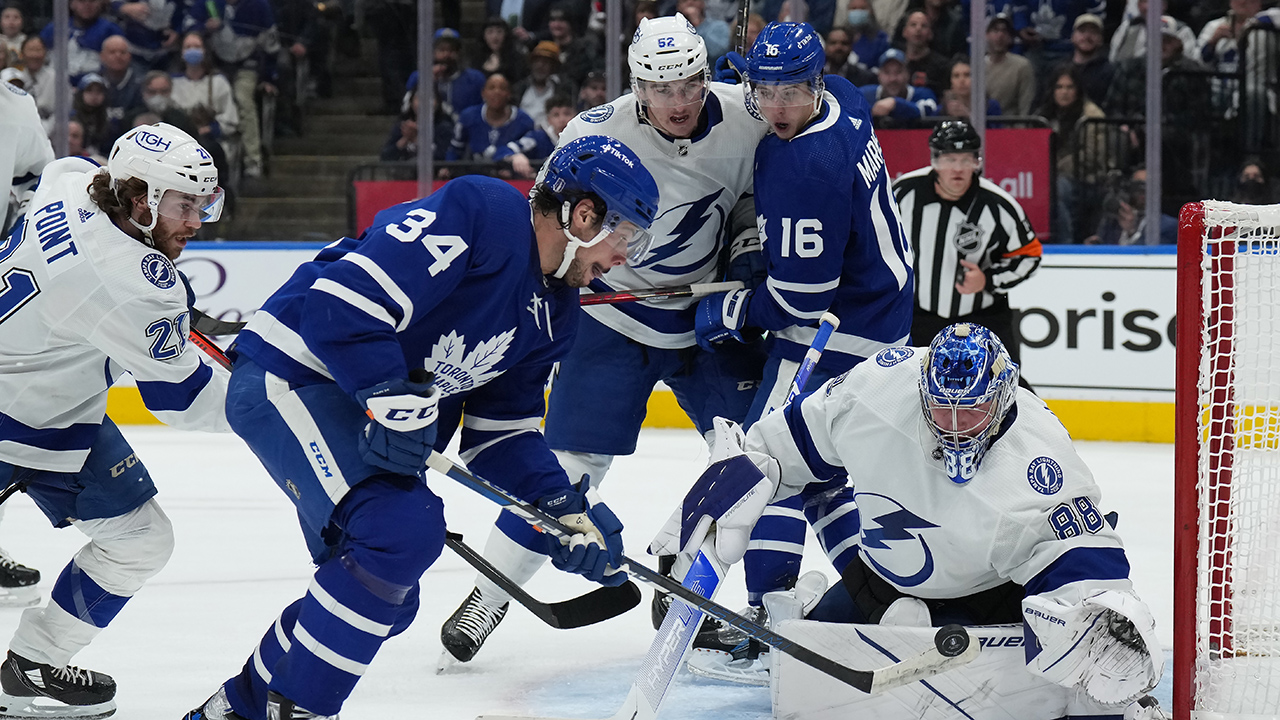
Nowhere has the NHL salary cap worked better to crush 1970s/80s style dynasties than in Tampa, where the once-unstoppable Lightning squad that won consecutive Stanley Cups in 2020 and 2022 has steadily been drained of talent due to the cap purge. First, it was their checking line with Yanni Gourde and Blake Coleman. It was then defensive stalwart Ryan McDonagh and savvy winger Ondrej Palat. Now, this past offseason, it was the hard-nosed Alex Killorn, the steady Ian Cole, and power-play specialist Corey Perry. The result is the star players on the roster are no longer supported by mind-blowing depth. All the complementary pieces that made the Lightning so great have been replaced with unappetizing replacements.
In September, it was announced superstar goalie Andrei Vasilveskiy would miss the first chunk of the season with injury, with a return projected somewhere between American Thanksgiving and the start of January 2024. That would put him out for anywhere between 25 to 35 games, give or take. Of all the stars on the Lightning, Vasilevskiy is the one they could not afford to miss, partially because the team has chronically under-funded the backup goalie spot due to Vasilevskiy’s enormous salary, but also because the Lightning have become dangerously reliant on Vasilevskiy in recent years.
Last season, the Lightning finished below the Ottawa Senators in expected goals against per 60 at 5v5, defensive metrics that sagged especially in the second half of the season. It didn’t matter, however, because Vasilevskiy is an elite goalie who made up for those cracks in the foundation. Some of the defensive struggles were due to the defensive depth chart, which is not nearly as formidable as it once was, but it also seemed that the Lightning were conserving energy for the postseason as their defense was much stronger against Toronto in the playoffs. This season, they won’t be able to do the same knowing making the playoffs is not assured in a deep and competitive Eastern Conference.
If Tampa plays with the same level of defense they did in the final couple months of last season during the first few months of this season only with backup goalies in net, it will sink them into a standings hole that will be hard to pull out of. Whether their goalie is Jonas Johansson (the current backup) — who is among the worst goalies in the cap-era NHL — or someone claimed off waivers, the Lightning will need to protect and support that goalie. They will need to exert more effort defensively and play a more structured game, recognizing that effort will need to be expended in October and November or else there will be no May and June for which to conserve energy.
This Lightning lineup is aging — Victor Hedman (turning 33 in December), Steven Stamkos (also 33), and Nikita Kucherov (30) — and they have to do increasingly larger shares of the work on a nightly basis when the bottom six now consists of the likes of Luke Glendening and Tyler Motte. Whether those great stars have enough juice to keep the team treading water until Vasilevskiy returns will determine their season.
Will the lingering scars of last year’s playoff run sink the 2023-24 Panthers?
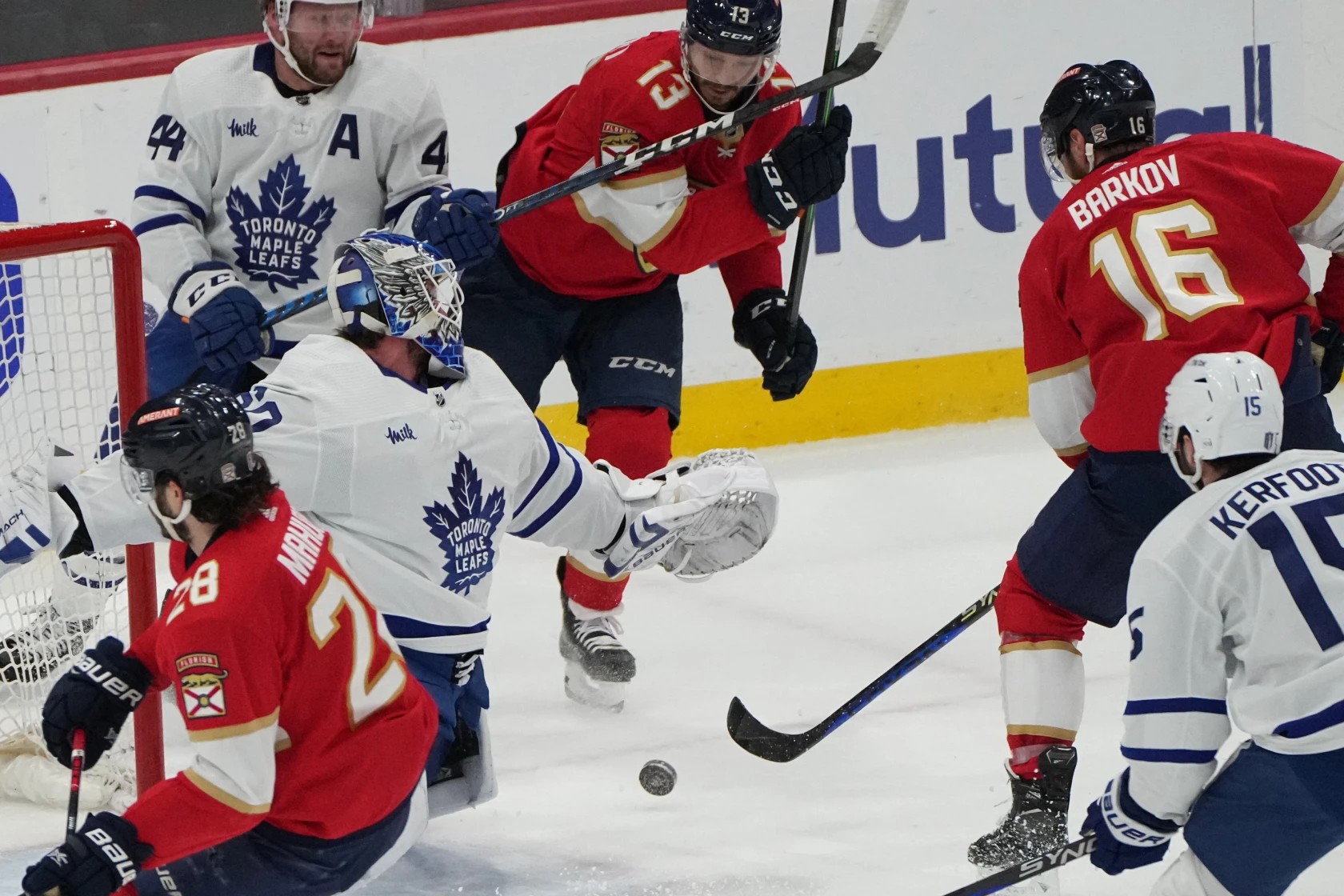
The Florida Panthers finally made a deep run in the playoffs, winning the Eastern Conference and making the Stanley Cup Final for the second time in franchise history. Their Cinderella story was a massive moment for the once-dormant franchise and a validation for Bill Zito’s leadership, but the run did not come without a cost. The bruising, physical style Panthers played took its toll on the roster and its health as Brandon Montour and Aaron Ekblad both underwent offseason surgeries that will put them out for the first couple months of the season. At forward, Sam Bennett will miss a couple of weeks as well.
These aren’t necessarily catastrophic ailments, but Florida appears to be poorly equipped to handle injuries to Montour and Ekblad, their two best defenders. Their third-best defender from last season was arguably Radko Gudas, who signed in Anaheim. Lots of pressure then falls on their final top-four defenseman from 2022-23, Gustav Forsling, to carry weight for the entire team.
The remaining depth chart is not pretty. Josh Mahura has quietly been very good in third-pair minutes, but he will now likely be forced to play much higher in the lineup. Oliver Ekman-Larsson is the definition of a reclamation project at age 32 in the wake of foot injuries, while the likes of Dmitry Kulikov, Mike Reilly, and Niko Mikkola have been either third-pair or AHL defensemen in recent years but will now be thrust into larger roles, too.
Florida’s defensive depth chart sans Montour and Ekblad is clearly the worst of any team with the hope of winning the Stanley Cup. Similar to Tampa, the Panthers have to hope to survive the first month or two of the season. Thankfully, they do have a phenomenal forward line chart that should create tons of offense to compensate for the defensive problems, but it is worth remembering that this team was very healthy last regular season and they still nearly missed the playoffs. Any reduction in their level of play due to injuries could sink them below the playoff line as teams like Buffalo and Ottawa attempt to leapfrog them.
Of course, another unknown that’s worth mentioning is Sergei Bobrovsky, the hero of Florida’s long playoff run. Bobrovsky has not been great in the regular season for several years, and it’s hard to project him for this season. He’s now 35 years old with a lot of miles on his tires. He is inside the top 50 most games played all time by an NHL goalie and is coming off a season where he just played 69 games between the regular season and playoffs.
Can Bobrovsky give them the needed goaltending to survive a creaky defense and will he be healthy? If not, the responsibility falls to largely untested Anthony Stolarz, who begins the season as the backup. We know Florida can score goals, but whether they can overcome the injuries and fatigue from the spring to prevent enough goals is the bigger story.
Just how big of a deal is losing Patrice Bergeron?
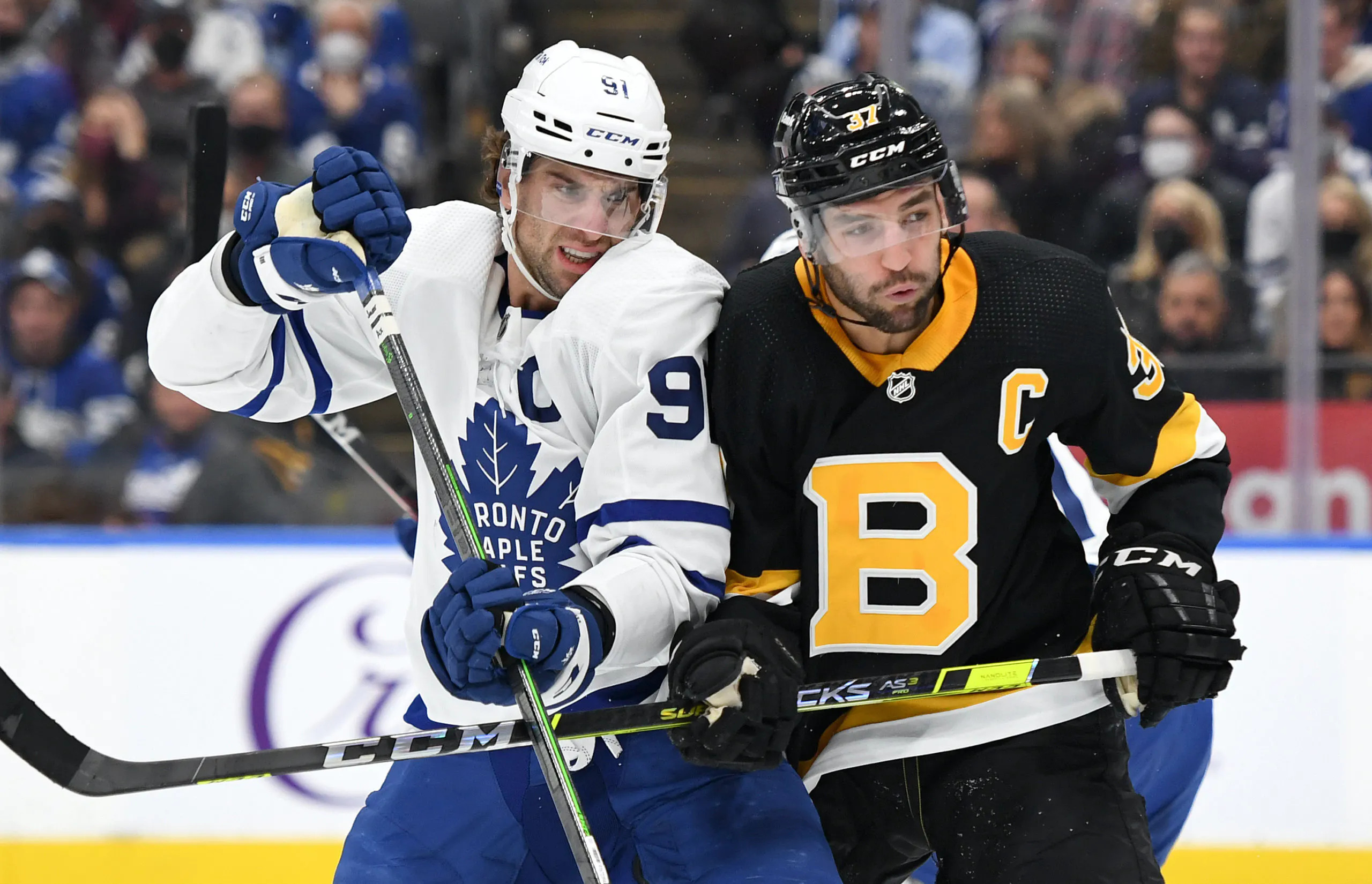
The Boston Bruins stitched together the greatest regular season of all time in 2022-23 with an astonishing 65 wins and 135 points to win the Presidents’ Trophy by a mile. We all know what happened next: a titanic collapse in the first round against Florida despite taking a 3-1 series lead.
Boston subsequently suffered a major drain of talent from the roster. Trade deadline pickups Dmitry Orlov and Tyler Bertuzzi signed with other contenders, while Taylor Hall and Garnett Hathaway landed with bottom feeders. Those losses devastated Boston’s offensive depth, but the biggest losses were down the middle at the top of the lineup: the retirements of Patrice Bergeron and David Krejci.
Krejci was a solid center and his absence will likely force Pavel Zacha to the position, where he has been less effective in the past. Bergeron’s departure is a much bigger concern for the Bruins. Not only was Bergeron Boston’s top-line center — a spot they didn’t find a proper replacement for — but he was an immaculate defensive forward, among the best of all time. The zillion-time Selke winner was the identity of the Bruins for ages.
On paper, Boston should still have a terrific defensive team. Hampus Lindholm and Charlie McAvoy both played like legitimate #1 defensemen last season, while Matt Grzelcyk and Brandon Carlo round out an elite top four. Even a third pair with Kevin Shattenkirk and Derek Forbort isn’t bad. The forwards like new captain Brad Marchand have plenty of defensive prowess themselves, so the Bruins shouldn’t see a massive defensive dropoff, but this season will test that hypothesis. How much does losing the defensive dominance of Patrice Bergeron matter? Does it trickle down to every player on the roster, or is it contained to only his former linemates?
How about Jake DeBrusk, who played with Bergeron last season and had the best year of his career (when healthy)? How about Boston’s penalty kill, which ranked first at 87.3% last season? Bergeron’s imprints were all over this team and his exit provides an answer to the long-held question of how much forward defense matters. Some argue that we underestimate the impact of great defensive forwards and how much they impact the game/control shifts for their team. Others argue that it’s offense that matters far more and defensive impacts for forwards are not nearly as large. This Bruins team, and how far they drop off from last season’s incredible regular season, will provide an interesting data point one way or the other.
Is this the year the Maple Leafs finally win the Atlantic Division?
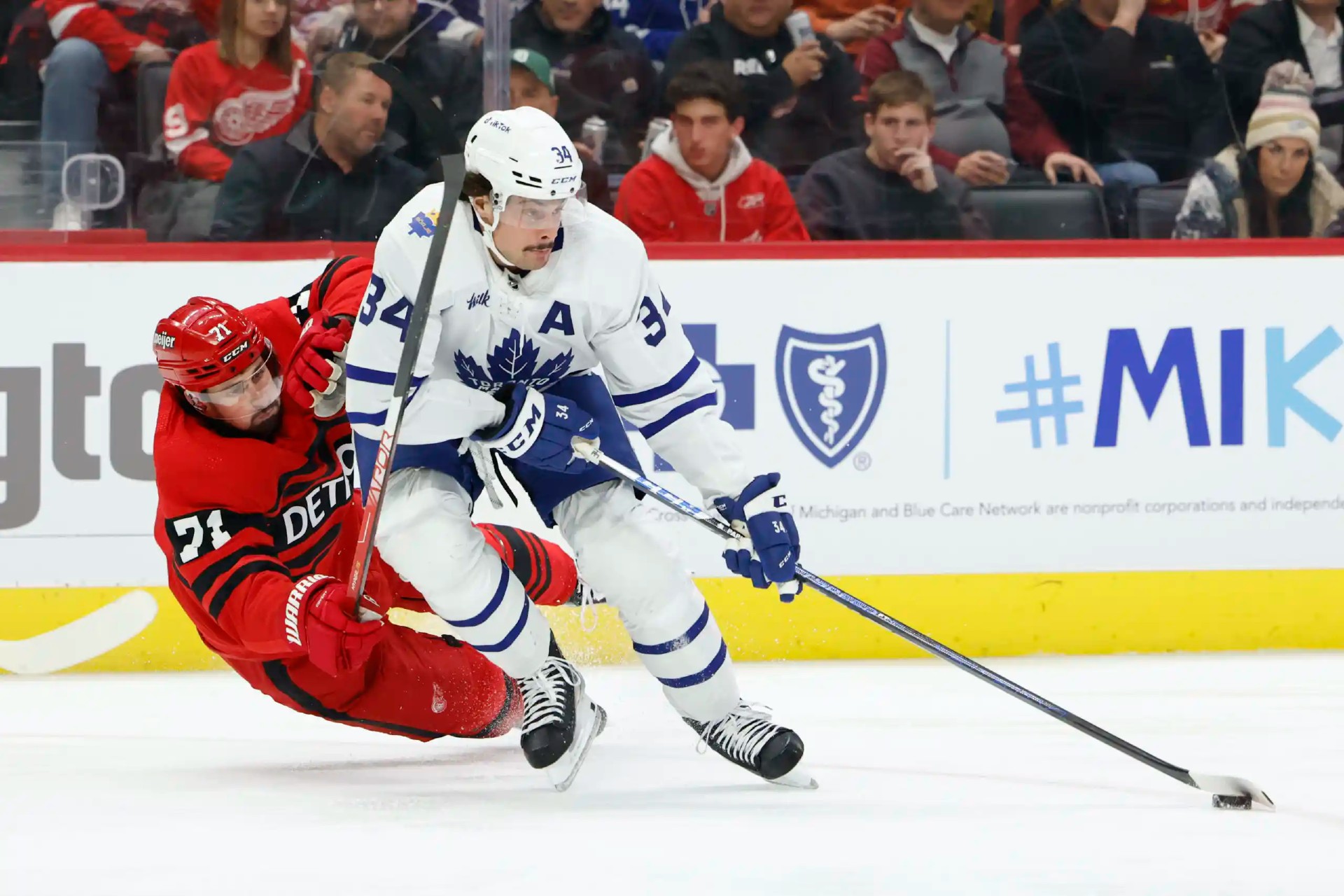
Over the life of this Maple Leafs core dating back to 2016-17, they have never won the Atlantic, nor really have they come all that close. The Leafs finished eight points back in both 2016-17 and 2017-18 and then have watched as the Presidents’ Trophy winner captured the division in each of the last four seasons of its existence (Tampa 2019, Boston 2020 & 2023, Florida 2022). While the Leafs technically finished only seven points back of Florida in 2022, they were never seriously in the running for the division after the first month or so of the season.
That’s been the format in this ridiculously brutal division: one team setting the world on fire out of the gates and putting the chase for the division title out of reach by December. Never once has that team been the Maple Leafs. Could this be the year?
I don’t anticipate the Leafs becoming the Presidents’ Trophy winners who roll to a historic, 120+ point total as three of those four past winners did, nor do I think that such a regular season is beneficial for the playoffs (look how it turned out for those teams). But I do think the expectation should be that Toronto should win the Atlantic Division this regular season.
The juggernauts of the past don’t seem to be as present this season as detailed earlier in this piece. Boston is sorting through immense losses, Tampa’s roster keeps declining and has a major injury wrench thrown in the plans, while Florida’s roster is dealing with the scars of the last playoffs and a creaky defense corps. On paper, the Leafs’ roster is the best in the division with as deep of a forward group as Florida or Buffalo but with a more stable defense and goaltending situation (even if the Leafs have real questions there).
Over the past three regular seasons, Toronto has played at a 113 points per 82 games pace. That wasn’t good enough to win the Atlantic either of the last two seasons because of the absurd standard established, but looking across the division, it sure feels like 113 points would get it done this year.
All of that said, it will take a concerted effort for the Maple Leafs to win the division. A strong start to the season, which did not happen in either of the last two seasons (2021-22: 4-4-1 in October; 2022-23: 4-4-2), would go a long way. The same could be said for taking games against the league’s worst teams more seriously, which has been an issue for years running now and has resulted in the team throwing away easy points.
The Leafs have made up for it in the past by cobbling together tremendous records against the league’s elite in the regular season, but that does not feel like a terribly sustainable method here. Maybe it’s been the case of a team so focused on the playoffs to even care about the matchups against the bottom-feeders; maybe it’s because the division race has been over so quickly in past years that it’s let the seriousness out of the room when the Arizona Coyotes show up on the schedule. Either way, the Atlantic Division seems there for the taking, but there’s no guarantee that sticking to the same old habits of the past will necessarily get it done… even if 113 points probably will.


